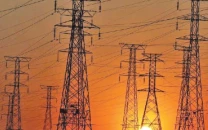Rare 'Blood Moon' eclipse to dazzle Pakistan Sunday
SUPARCO says the eclipse starts 8:30 pm, peaks 1:55 am, with part of the Moon darkened by Earth’s shadow

Sky-watchers in Pakistan are set for a remarkable celestial spectacle this weekend as a rare lunar eclipse, commonly called the "Blood Moon," will be visible across the country between September 7 and 8, weather permitting.
The Pakistan Space and Upper Atmosphere Research Commission (SUPARCO) announces that a total lunar eclipse will be visible across Pakistan on the night of 7th September 2025. Astronomy enthusiasts, students, and the general public will have the opportunity to witness this fascinating celestial phenomenon.
According to SUPARCO, the eclipse will begin at 0830 pm and reach its maximum at 01:55am when a portion of the Moon will appear darkened as it passes through Earth’s shadow. The event will conclude at . The eclipse will be visible in Asia, Africa, and parts of Europe, with clear visibility expected in most regions of Pakistan, weather permitting.
A lunar eclipse occurs when the Earth comes directly between the Sun and the Moon, casting its shadow across the lunar surface. Unlike solar eclipses, lunar eclipses are completely safe to observe with the naked eye, binoculars, or telescopes.
“This is a great chance for people, especially students and astronomy enthusiasts, to connect with science and explore the wonders of our Universe,” SUPARCO spokesperson stated.
SUPARCO encourages the public to observe the event and, where possible, join astronomy clubs and educational groups that will be hosting observation sessions in various parts of the country. The organization also plans to share photographs and updates through its official social media platform. www.facebook.com/Sead.Pakistan.
What is Blood Moon Eclipse
A red moon lunar eclipse, often called a “blood moon,” occurs during a total lunar eclipse when the Earth comes directly between the Sun and the Moon. Instead of disappearing into complete darkness, the Moon takes on a reddish or copper hue. This happens because the Earth’s atmosphere bends sunlight as it passes through, filtering out the blue light and allowing only the red and orange tones to reach the Moon’s surface. The effect makes the Moon appear dramatically red in the night sky, even though it is actually in Earth’s shadow.



















COMMENTS
Comments are moderated and generally will be posted if they are on-topic and not abusive.
For more information, please see our Comments FAQ